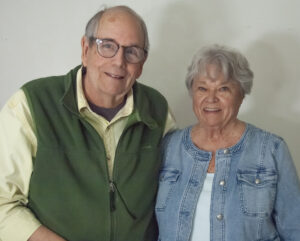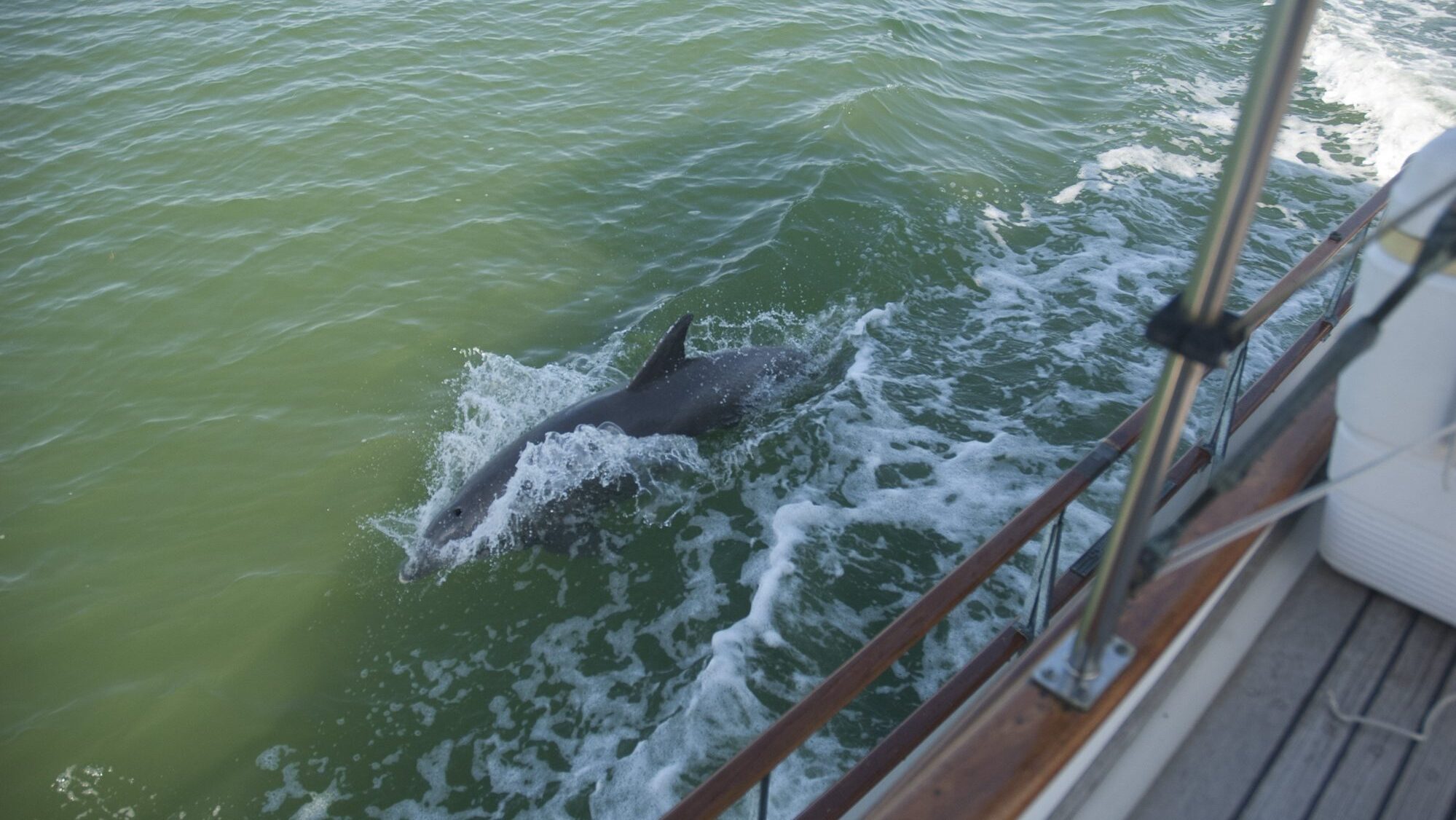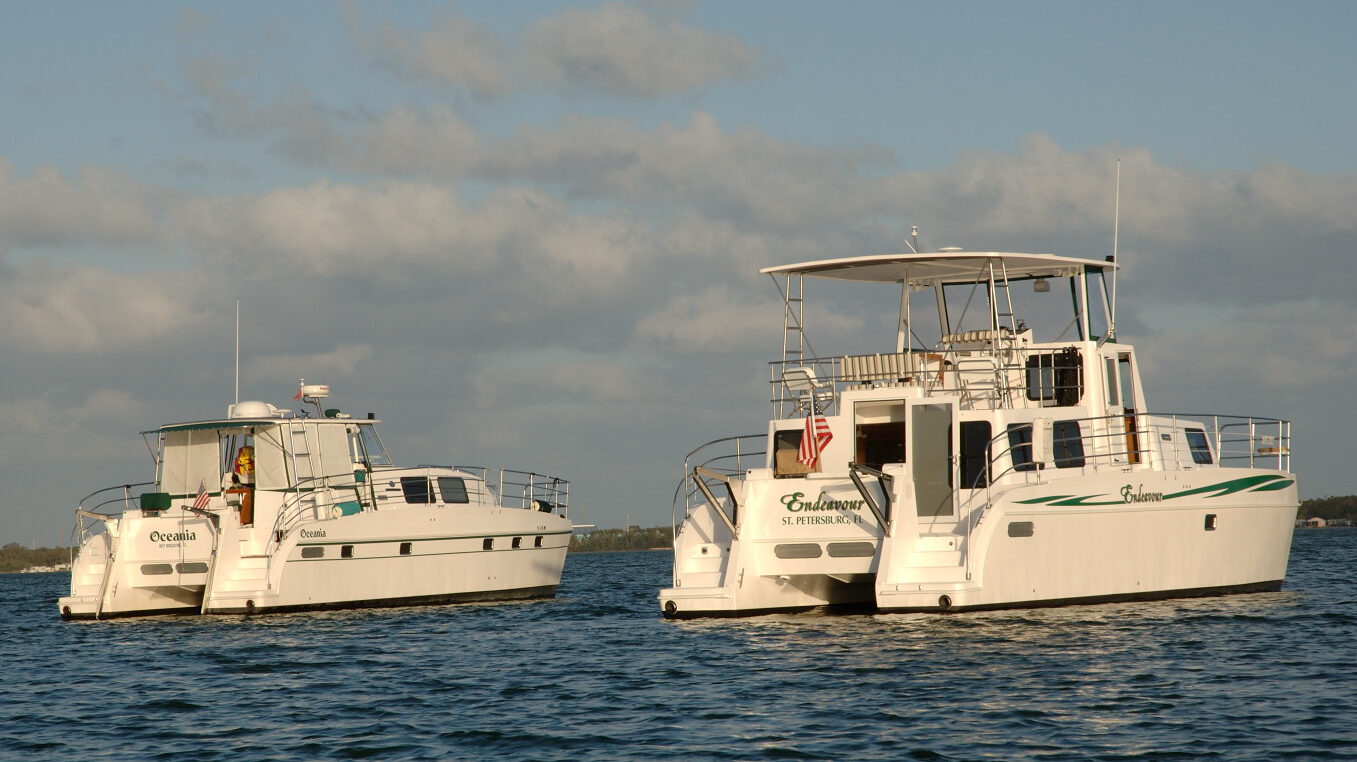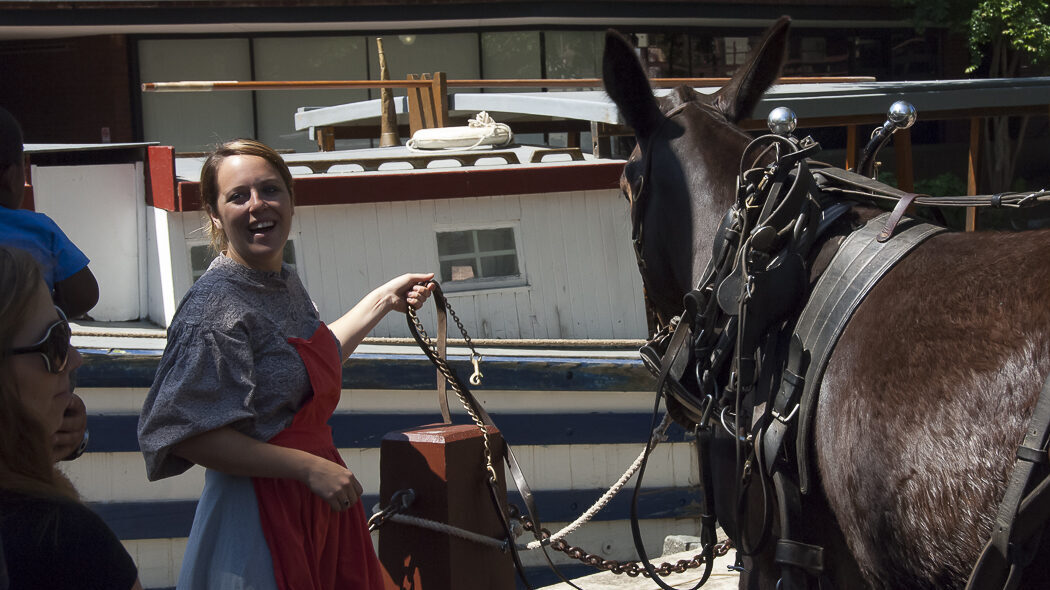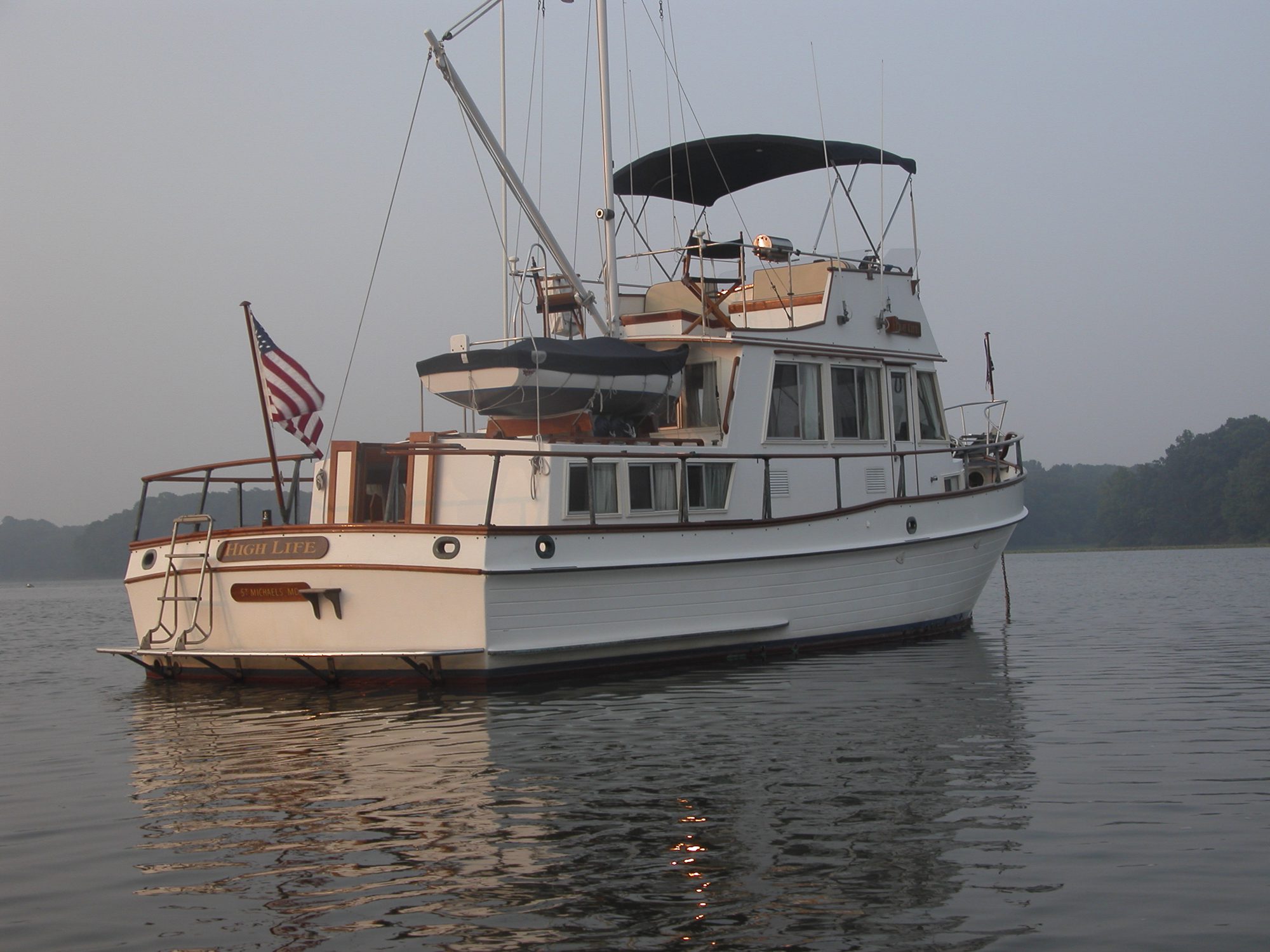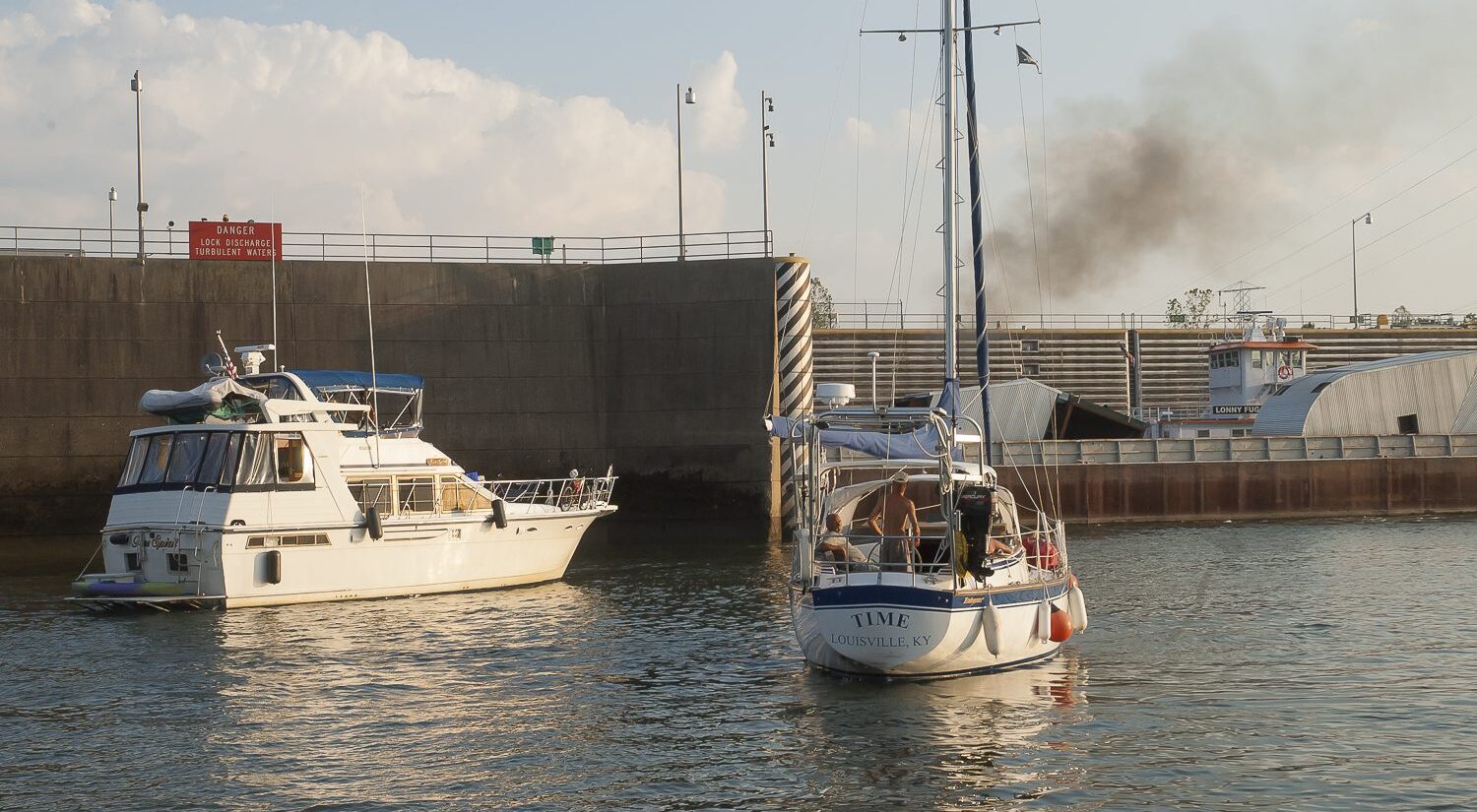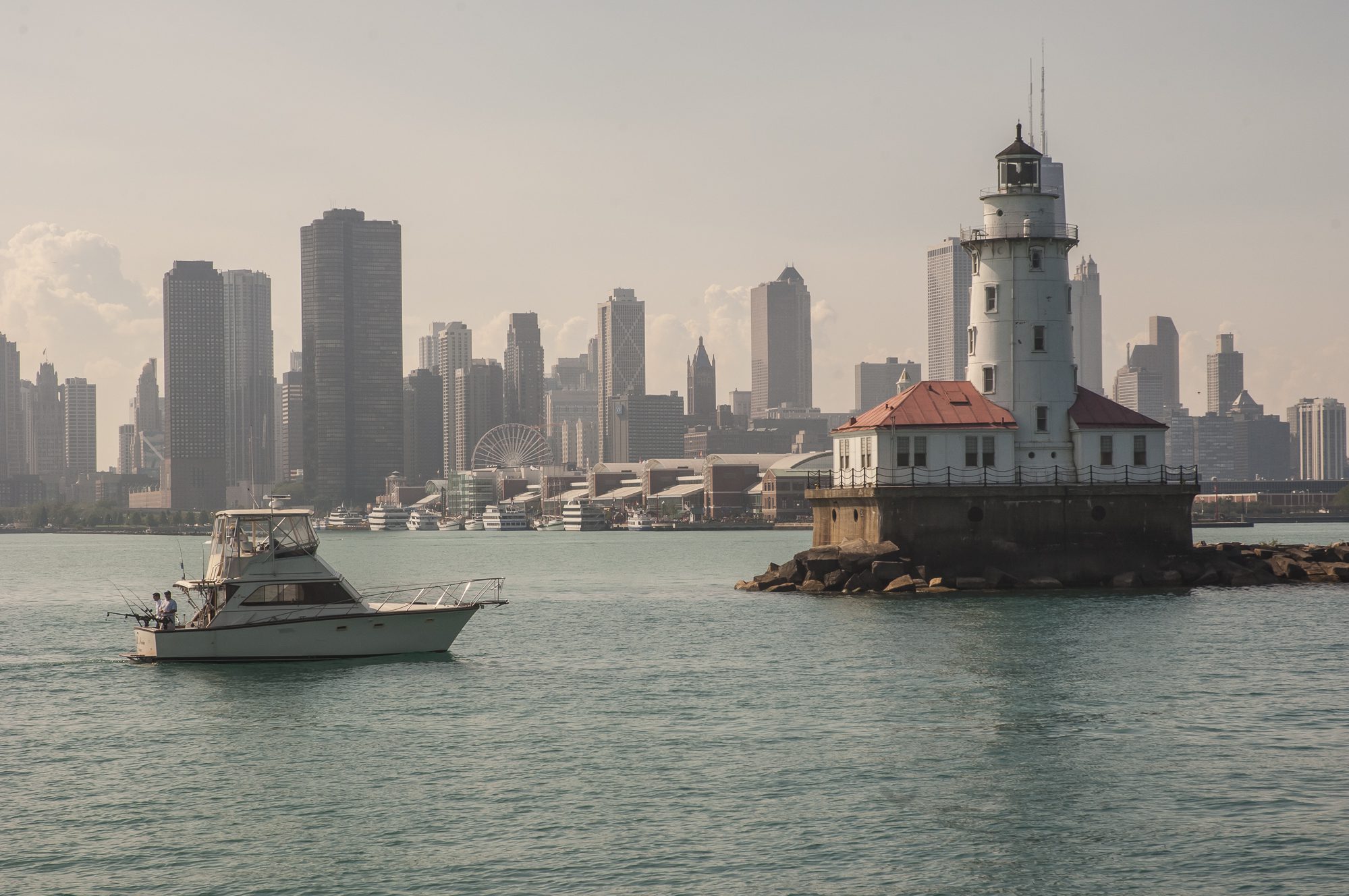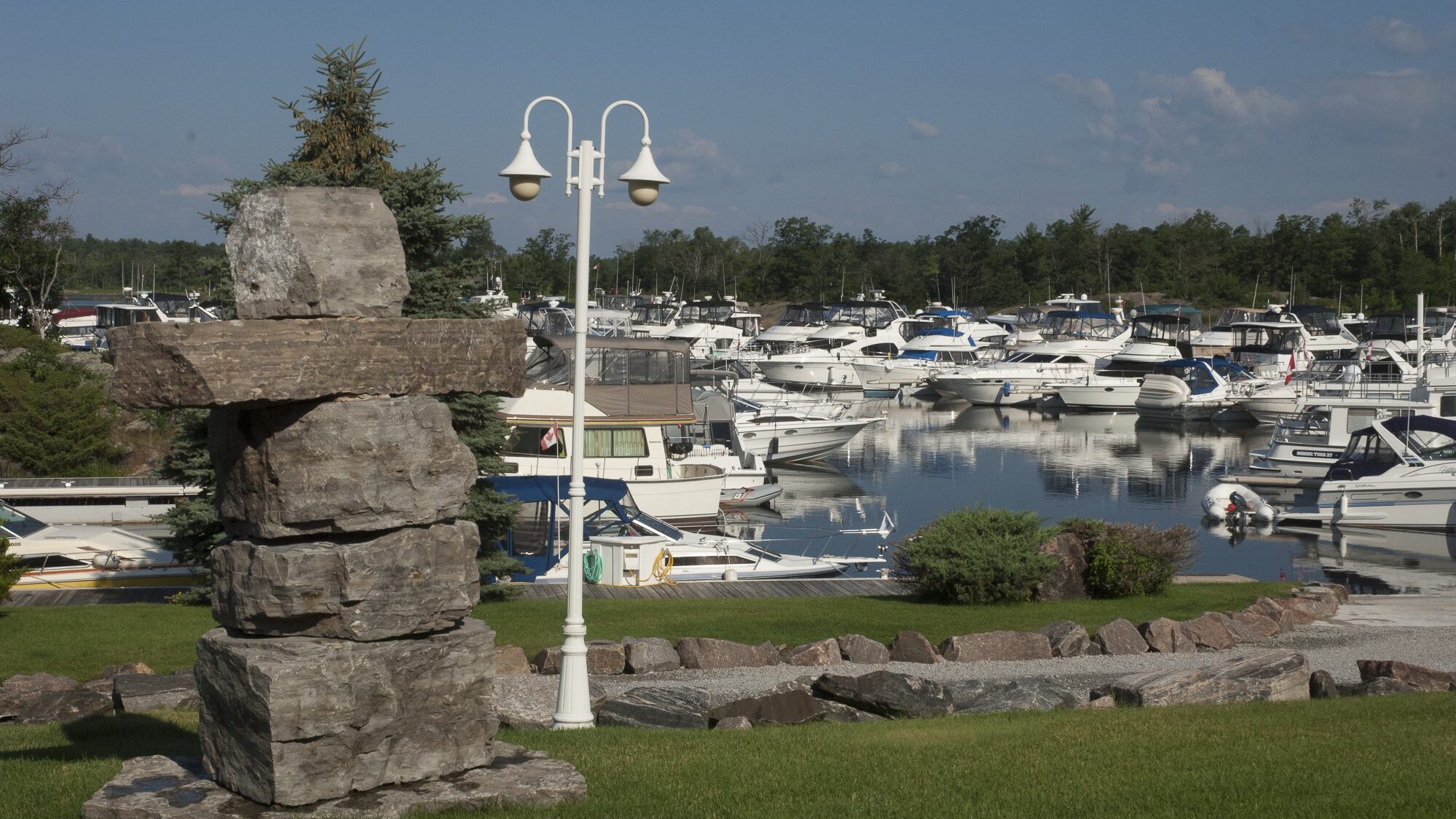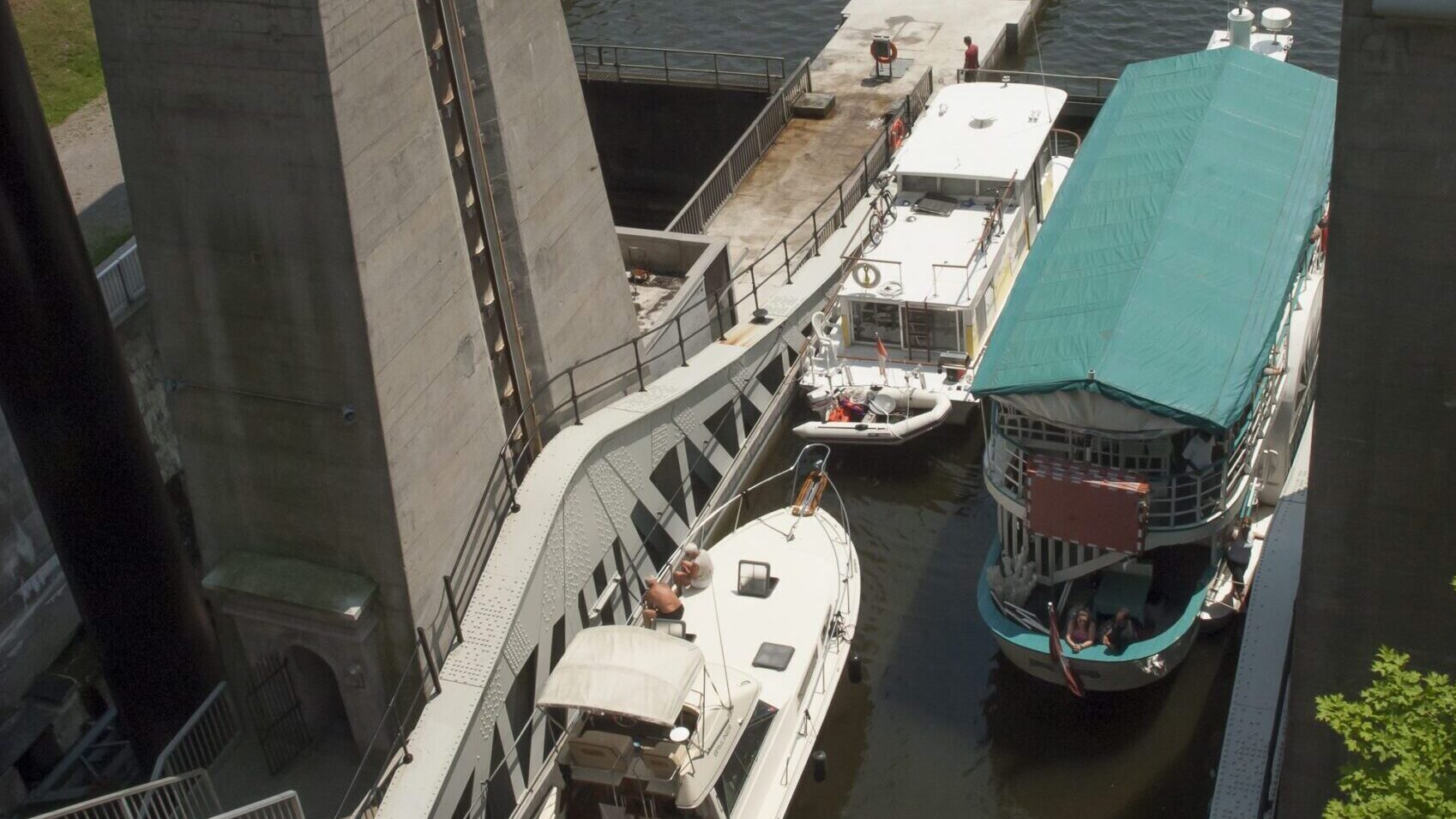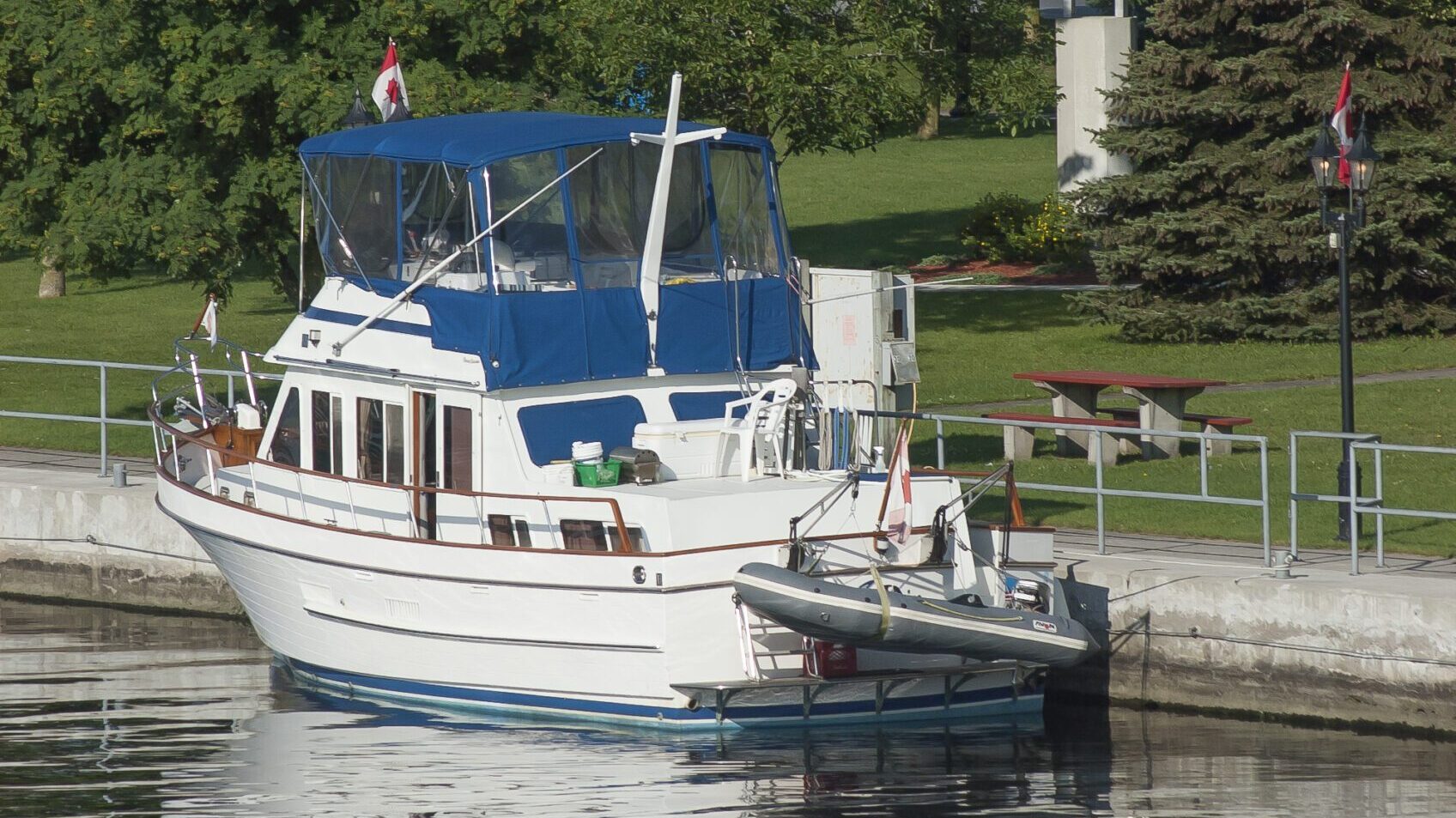Being my own cruise director on the Chesapeake Bay
When I see a glistening cruise ship gliding down the Bay I wonder what it would be like as a passenger. I’ve seen their brochures with pictures of spacious staterooms and private balconies. The images of scrumptious meals and fine dining morning, noon and night appeal to me. And who wouldn’t want to hear onboard experts talk about the history and lore of places you visit? We’ve had many sail and power boats, but we never were aboard a cruise ship on a Chesapeake Bay tour of harbor towns.
Many of our boating friends have sold their boats and happily adjusted to cruising on ships instead of their boats. Should we follow their lead? Instead we followed in the wake of a cruiseliner on the Chesapeake Bay to see where they went.
Circumnavigating Chesapeake Bay
We decided to follow the itinerary of the 6-day, 7-night excursion advertised by the American Cruise Lines. The ports of call included Baltimore, Yorktown, Crisfield, Tangier Island, Cambridge, Oxford, St. Michaels and Annapolis—all within easy reach of our boat Early Bird, a 31-foot lobster yacht.
The itinerary includes some overnight passages so passengers arrive with the entire day ashore. Since we don’t sail overnight anymore I planned our mid-May cruise to include easy runs and favorite anchorages. We began in Baltimore like the cruise ship, headed south on the western shore of Chesapeake Bayand then returned on the eastern shore to our home port in St. Michaels.
A cruising cat comes along
On board with Gene and me was our cat Samantha Bee, a feisty little critter much like the spoof reporter on The Daily Show and star of Full Frontal. She is a cat with an attitude who is not fond of getting in her carrier to go to the boat. However, once aboard she’s a delightful crew member. When the engine turns on, she goes to her hidey hole at the foot of the pilot berth in the forward cabin. And when the engine stops she waits for Gene to open the drawer where her treat is stored. Then she’s ready to meet the rest of the day. She’s a grey tabby that’s fun to have along. But she gets frisky when the sun goes down; she likes to patrol the decks, sometimes the dock, and aboard other boats.
I realize we would not be enjoying her company on a cruise ship since pets are not allowed.
Being tourists at B-more, Charm City

We left our slip on the eastern shore at the Miles River Yacht Club and headed to Baltimore and tied up at the Inner Harbor Marina in the center of all things Baltimore. We headed to the American Visionary Arts Museum just across the street on Key Highway. The museum opened with a mission to display art produced by self-taught individuals who had no formal training. The artwork is different from folk art in that the visionary artists who don’t listen to anyone else’s tradition. It’s unlike any other art museum we’ve ever been to so we visit when we can to see these spontaneous creations.
As we walk through the exhibits the attention to details is what keeps the eye always noticing something new. Even the hand rails are decorated with strings of colorful metal bottle caps and beads hung below them. The garden gallery featured pieces of sculpted metal and wood that give new meaning to the term “yard art.” And the Magical Mechanical Theatre displays pieces of moving art you can operate with a crank. I liked creating a natural wave machine with tiny pieces of hand crafted wood.
From Baltimore’s seafront we took the free Charm City Circulator bus to Fort McHenry and toured the exhibits and grounds before returning to the boat. Later we strolled along the tree-lined streets of Federal Hill. Back at the dock we had a drink with sailors from North Carolina. We never exchanged names, just enjoyed sipping cocktails with cruisers who were spending a few weeks on the Bay.
Our friends who have turned to cruising on ships say one of the nicest things about it is meeting new friends who share the same interest in traveling. Makes me thing it’s a lot like cruising.
I had taken a look at the menu of the cruise ship, and if we had been aboard during the cocktail hour, we’d be enjoying a glass of wine with steamed shrimp. I served a more modest bowl of nuts. For dinner the cruise ship featured Beef Tenderloin Crostini; but we devoured the spaghetti and salad coming out of Early Bird’s galley.
As the day ended we watched the lights of the city flick on as a heron took up station on the dock across from us. Baltimore is definitely a boater-friendly city, even our friends who are diehard Orioles and Ravens fans prefer to go to a game by boat rather than car.
Annapolis MD
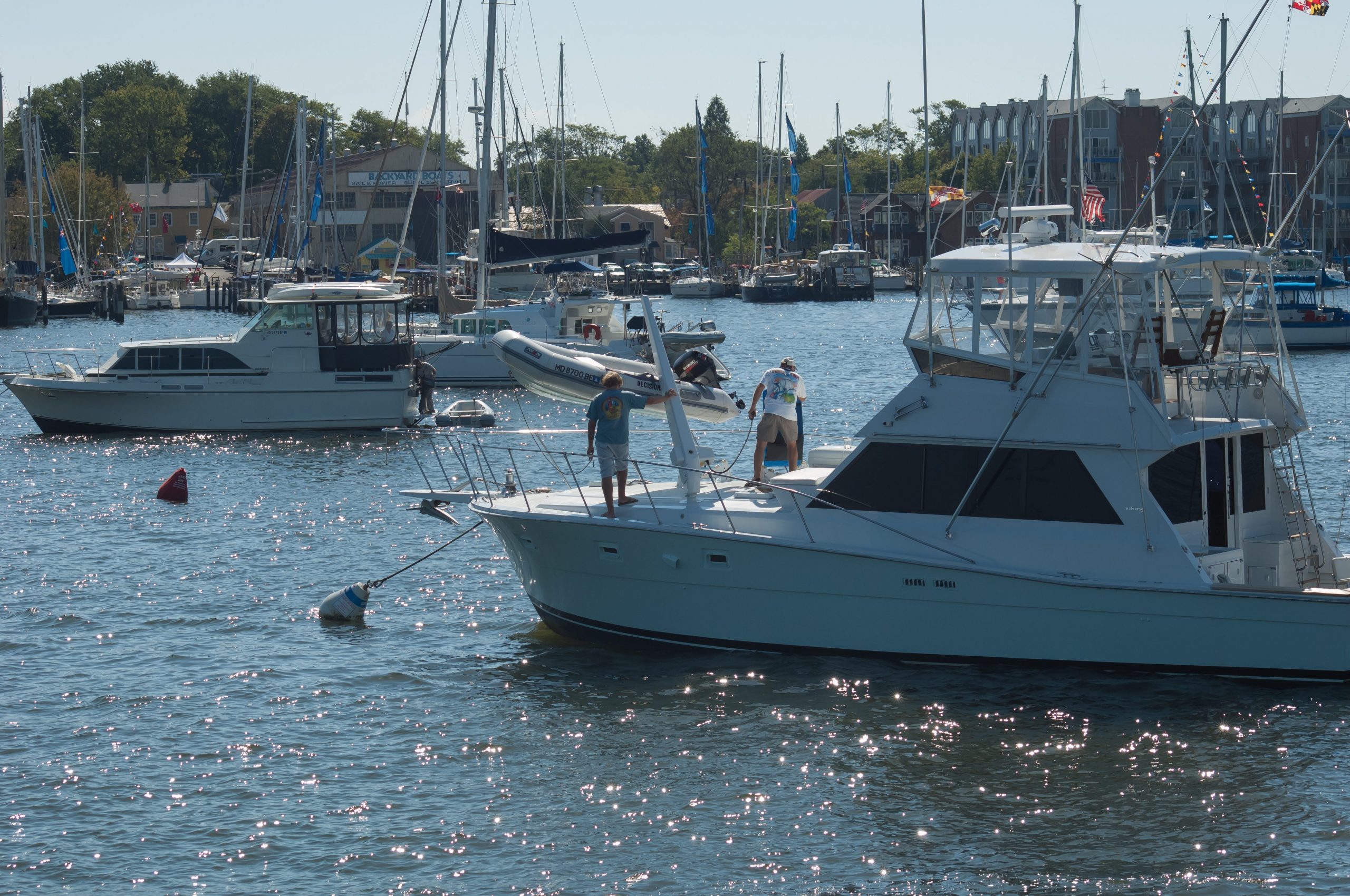
While the cruise ship would be making an overnight passage from Baltimore to Yorktown we had an easy run from Baltimore to Annapolis and took a slip downtown at the Yacht Basin marina. We always stop in the square and ponder the memorial to Kunta Kinte, an African slave brought to Annapolis in the late 1700s. His life was made famous in the novel and television series Roots by Alex Haley.
We took a walk across Spa Creek Bridge and turned left into Eastport to have dinner at one of our favorite places, the Boatyard Bar and Grill. We like it there because it’s off the beaten track. It’s one of the advantages of cruising on your own boat because you can control where you go. And whenever we go to the state’s capital we stop for breakfast at Chick & Ruth’s Deli on Main Street. At 8:30 a.m. every day customers and staff stop what they’re doing to stand and recite the Pledge of Allegiance. We like the squeezed-in atmosphere of the small booths so you’re forced to talk to strangers.
Continuing South on the Bay
The Solomons offer some of the best boatyards and snug anchorages on the Bay so we stopped there to take on fuel and anchor for the night in Back Creek. It was a nice break from marina hopping in Baltimore and Annapolis. Then we headed south. We felt fortunate to cross the mouth of the Potomac River and rode an outgoing tide down the Bay. When we’ve had to buck the current it felt like we were going backwards; so getting a lift was a pleasant change. I can’t imagine a cruise ship passenger would even think about the current on the Bay, but for cruising boaters the mouth of the Potomac can be challenging.
Just after lunch we crossed paths with the northbound American Glory cruiseliner. I fantasized about the Turkey Cobb Salad I’d be having in the liner’s spacious dining saloon while Gene savored the BBQ Back Ribs—if we’d been aboard. We settled for ham on beef steak rye sandwiches. Then we spent another night on the hook at Mill Creek on the Great Wicomico River in the protected tree-lined anchorage.
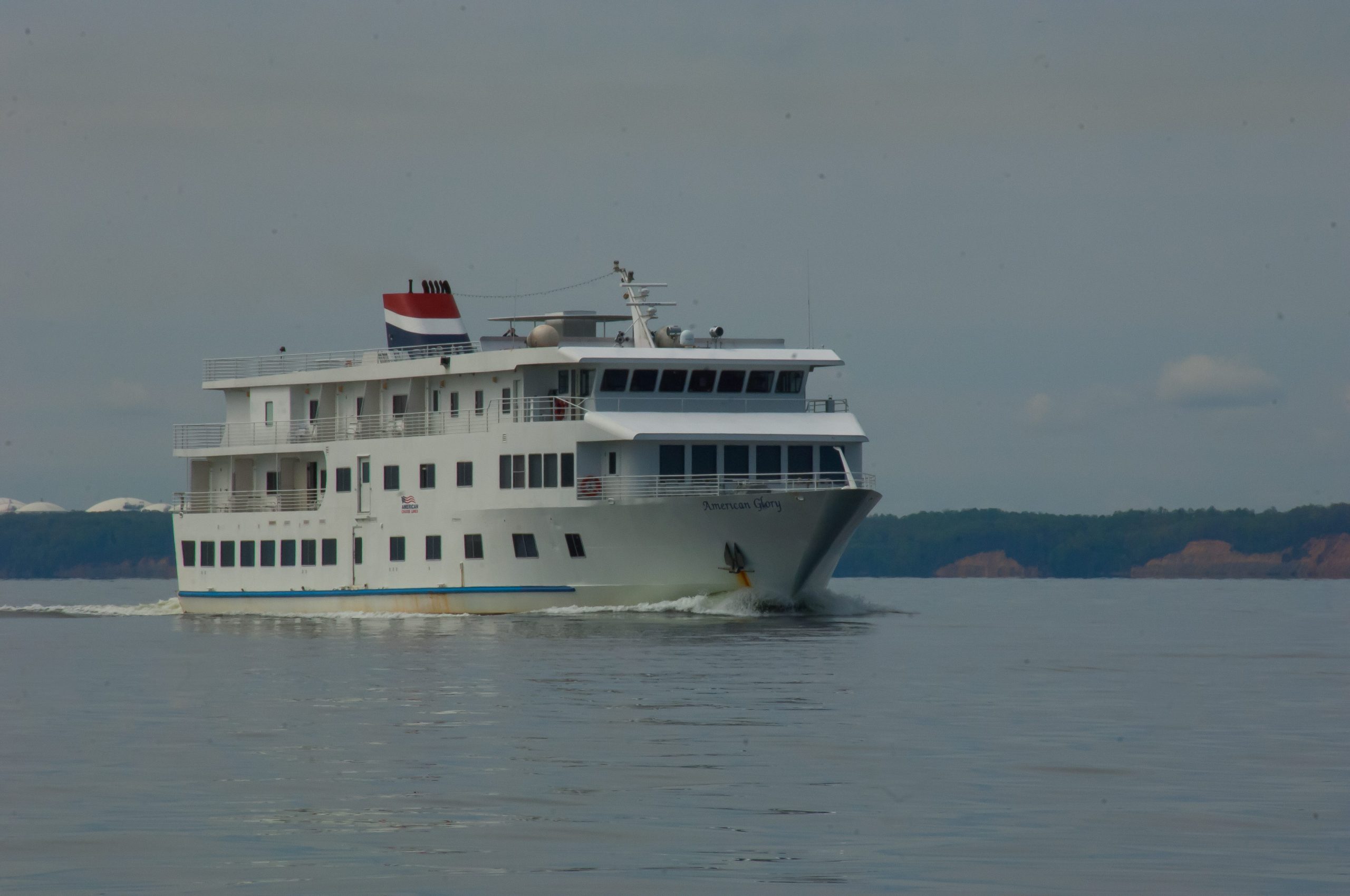
Historic Yorktown VA
We got an early start heading south for Yorktown on the York River, and the wind switched out of the east blowing about 10-15 mph at the York Split. The tide turned against us pulling crab pot floats under the water so we had to keep a sharp lookout. We arrived in the early afternoon at Riverwalk Landing marina in the heart of Historic Yorktown and tied on the inside of a long floating dock. The marina sits squarely at the foot of town so it’s ideally located near the shops, restaurants and a lovely brick walkway that runs along the riverfront. When we took the free trolley and stopped at the Battlefield Visitors Center we learned that the success of our forefathers against the English forces in the Revolutionary War was largely because of the French guarding the entrance to the Bay to support General Washington’s patriots.
Meeting up with cruise ship passengers
Early the next morning I woke to the sound of bow thrusters as the Independence, another of the American Cruise Lines tied up across from us on the dock. We laughed when Gene heard one of the galley staff step on the dock and say “Where are we?” Later in the morning as the passengers disembarked heading for a bus tour of Yorktown, we chatted with some of them. “How big is your boat?” they asked us while we wanted to know about the accommodations on the ship. A woman said she was most happy about the lovely stateroom, especially its private balcony where she could sip her morning coffee. “Me too”, I said, because I love having my first cup in the cockpit waiting for the sun to come up. Her description of the bathroom sounded nicer than mine at home.
Another passenger mentioned the naturalists and historians on board were interesting. And I learned that a “riverlorian” is an expert on the history and folklore of American rivers. A man from the west coast gave us his card and said “If you ever want to sell your boat, please call me.” That was a surprise.
It was a nice way to visit with the passengers, but different from the often instant camaraderie you get meeting fellow cruisers. The discussion usually centers around weather forecasts, and where to find a New York Times and laundromat.
Early Bird was definitely the smallest little ship on the dock, but we were in good company with the cruise ship and Alliance and Serenity, lovely sailing schooners who berth there. The schooners are charter boats that seemed to have a lively business as we saw passengers board for day and evening sails.
A sidetrip to Williamsburg VA

Lunch was with Jon Stiehm, a friend who runs the educational video program at Williamsburg. We talked about the role of Rockefeller and his foresight. He gave funding to buy the property, restore the city to its original design and rebuild the stores and buildings. We hoped to return to the area sometime – by boat or car – and experience their Revolutionary City and visit Jamestown.
Crossing tacks with warships
A cab picked us up for a ride to Williamsburg to spend the day visiting the English settlement of self-sufficient colonists, each with their own skills and crafts. Some of the kids were decked out in period costumes; boys in tricorner hats, girls in bonnets and long dresses. We watched woodworkers and carvers create chairs and cabinets. And heard brickmakers explain the long process of combining water, clay, straw and sand to create bricks. We chatted with visitors from Canada and enjoyed hearing other distinct European and Asian accents, all enjoying this amazing place.
Leaving Yorktown we sensed a distinct wind shift to the north. Fog came up giving us about 3 miles of visibility but enough to see the blue lights of patrol boats. They were protecting a submarine coming up the river to the Navy Weapons and Munitions Station, just two miles northwest of Yorktown. Behind us came the Navy’s Warship 55 announcing they were approaching the bridge going out to sea. The warship broadcast an AIS signal identifying itself, but we weren’t surprised our receiver didn’t pick up anything from the stealthy sub. We had four eyes on the Navy vessels using our own binoculars which we always take aboard. As a matter of fact, here’s a few tips about Traveling with Binoculars we strongly recommend.
Detour to Virginia’s Eastern Shore
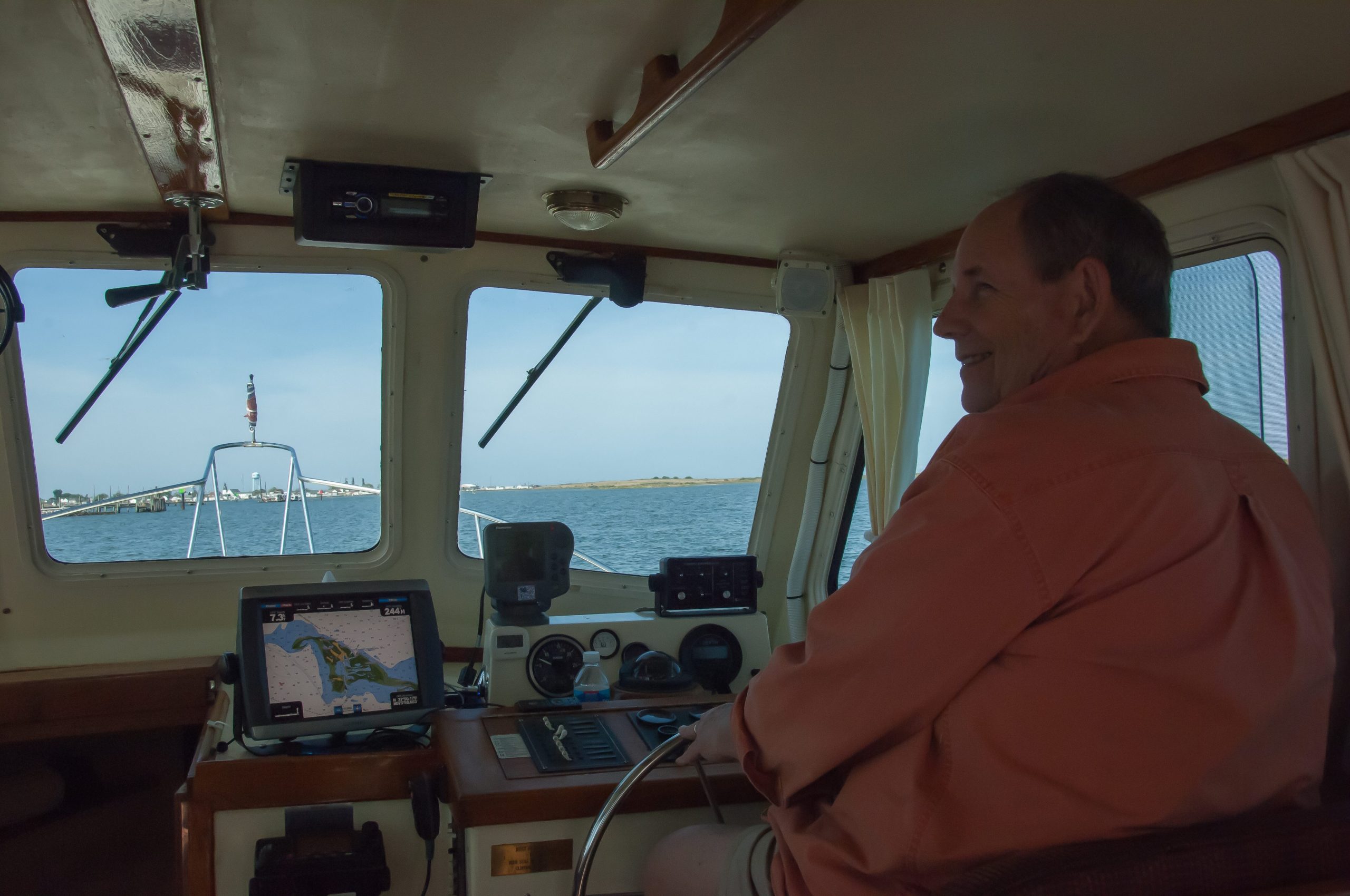
The sun came out and the weather cleared so crossing the Bay was calm and uneventful. When we reached the eastern shore we followed the serpentine route up Onancock Creek. We stayed over an extra day when hail and strong winds were predicted. They were true to the forecast.
In Onancock VA some of our favorite places are the Corner Bakery for donuts, Janet’s Café for lunch and Mallards at the Wharf. This little charmer of a harbor town isn’t on the cruise liner’s itinerary, but it’s ideal for small cruising boaters. We laughed at our colossal mistake one time when we thought we were going down the channel to Onancock. However, we had overshot it and were instead going to Occahannock, about 10 miles south. No matter how long you’ve been boating, it can still be very humbling.
Maryland’s Eastern Shore
It was a short run from Onancock to Crisfield and Somers Cove Marina, a massive marina complex with a pool, covered tables and a spanking new tile bathhouse. The floating docks were a welcome sight and the low fuel prices make Crisfield a popular destination for recreational boaters. Only a few other transient cruisers were at the marina, but Samantha Bee was feeling quite at ease when she made a leap for the dock. She didn’t go far, thanks to a big brown lab on another boat, who sent her scurrying back aboard.
We rented bikes for a spin around town, but not much was going on. If we’d been on the cruise ship we’d take their shore excursion, a ferry boat to Tangier Island, an almost magical place that feels like a trip back into time. Since we had been to Tangier recently we didn’t stop but we did poke our nose into Tangier Harbor. We saw its familiar weather-beaten fishing shanties lining the shore and maneuvered around a small dredge working in the channel. The last time we were there a docent at the History Museum talked about many of the young men who grew up on the island and later worked for commercial tugs and pushers. These kids were known to be hard workers with good seamanship skills, and few jobs remain on the island.
Going north we zigged and zagged through a minefield of colorful crab pot markers off Hooper Island Light. Later we gave plenty of room to the bombing area off Holland Island south of Hooper Island. It was a long run up the eastern shore to Cambridge on the Choptank River, but the seas were calm.
Cambridge MD
With a backdrop of the Route 50 bridge spanning the river, the Choptank River Lighthouse is easy to see where it sits at the end of Long Wharf dock. The replica of a 6-sided screwpile style lighthouse has become an icon of the city of Cambridge. It’s part of the Municipal Yacht Basin complex where the cruise ship ties up. Just beyond, the Nathan of Dorchester Skipjack is berthed at Long Wharf, paying homage to the city’s long seagoing history.
We took a walk to nose around the ever-gentrifying town. Whether you arrive on a cruise ship or your own boat it’s an easy walk to town. You’ll notice a flurry of urbam renewal in the downtown area with art galleries, restaurants and specialty shops. We tied up at the free seawall in town, where we could walk everywhere.
You can get a lot of visitor information about Cambridge and Harriet Tubman at Visit Dorchester County.
On to Oxford MD
We left Cambridge for a short trip to Oxford on the Tred Avon River off the Choptank River. Approaching the entrance to Town Creek we passed the Strand, a small beachfront with a broad view of the river. We took a slip at Oxford Boat Yard and Marina and walked around town. A favorite if ours is the Oxford Market on Morris Street for ice cream cones. We walk across the street to the waterside park to sit and enjoy the view of the river.
The main event for visitors is to take a walking tour of Oxford and learn about Oxford’s long history as a thriving seaport in colonial days. In the late 1600s the town was the first and only port of entry on the Eastern shore for British trade. Oxford flourished in this capacity until the Revolutionary War brought an end to British trade. Their goods were replaced by wheat and tobacco as a cash crop marking an end to the importance of being a port of entry.
Last Stop – Returning home to St. Michaels MD
Our run from Oxford to St Michaels – the last of our cruise – took us through Knapps Narrows at Tilghman Island. Approaching the channel we saw workboats and watermen heading toward Dogwood Harbor and we continued into the channel and under the drawbridge. The friendly bridge tender commented “You’re not so early today, Early Bird” as we passed under the open spans. We followed the circuitous route of red and green channel markers until we reached the Bay and headed north behind Poplar Island.
Recently we had taken a tour of Poplar Island sponsored by the Maryland Environmental Service. We were impressed at the extent of the work and progress to rebuild the island as a natural wildlife habitat from the mere remaining 5-acres of the island. Today its expanding footprint reuses the dredged material from the Bay’s shipping channels. At Rich Neck at the upper end of Eastern Bay we turned south into the Miles River, where we call home. If Oxford is the quiet sister, St. Michaels is the wild child of these old harbor towns. It’s a boater’s town because it’s so easy to get around and everything you need is nearby.
The harbor is most recognizable for the Hooper Straits Lighthouse that sits on Navy Point at the Chesapeake Bay Maritime Museum where we tied up. It’s also where the cruiseliners stay, giving passengers an opportunity to visit the museum and stroll into town. We wanted to see two of their exhibits, The Carvers at the Crossroads, a stunning collection of different decoy carvers styles and work and Push and Pull: Life on the Chesapeake Bay Tugboats, where they feature the changes over the years in the vessels and men and women who work on tugs docking ships and moving barges.
There is Plenty to See and Do in St. Michaels so we walked around town, had some tapas at Gina’s Café and later met friends for dinner at the Town Dock. The next morning we could see the sun rise over Leeds Creek from our slip. We had to set the alarm so we wouldn’t miss it.
Reflections
After breakfast at Carpenter’s Street we cruised from the town harbor slowly back to our slip in Long Haul Creek. We talked about the pros and cons of cruising on Early Bird vs. being a passenger on a cruise ship. “You’ve been cruising vicariously through the cruise ship’s website,” Gene teased as I made comparisons. That was making me realize the advantage of going on your own boat. I had control of where and when I went and if I wanted to stay longer or leave earlier than the prescribed itinerary, I could. That independence and power get high marks in my book.
The cost of the 7-day cruise is certainly a lot more than what we spent on our cruise. But many will argue that I don’t factor in how much we spend on owning and maintaining a boat. I admit it’s difficult to reconcile the cost of cruising, if not impossible, because it’s something we both love to do. And we couldn’t bring Sam aboard a ship, only service animals are allowed.
At some point in our lives when we don’t have a boat, a cruise ship would certainly be a wonderful way to see the Bay. But we thoroughly enjoyed following in their wake revisiting old haunts and discovering new ones.
- Adventures in the Outer Banks, NC
- Favorite National Seashores on the Atlantic Coast
- Choosing Binoculars for Boating
- Legs of the Great Loop Cruise
Gene and Katie Hamilton are veteran sail and power boaters and award winning boating writers. They are authors of Coastal Cruising Under Power and Practical Boating Skills. They are members of the Outdoor Writers Association of America.
Post Views: 1,694
|



